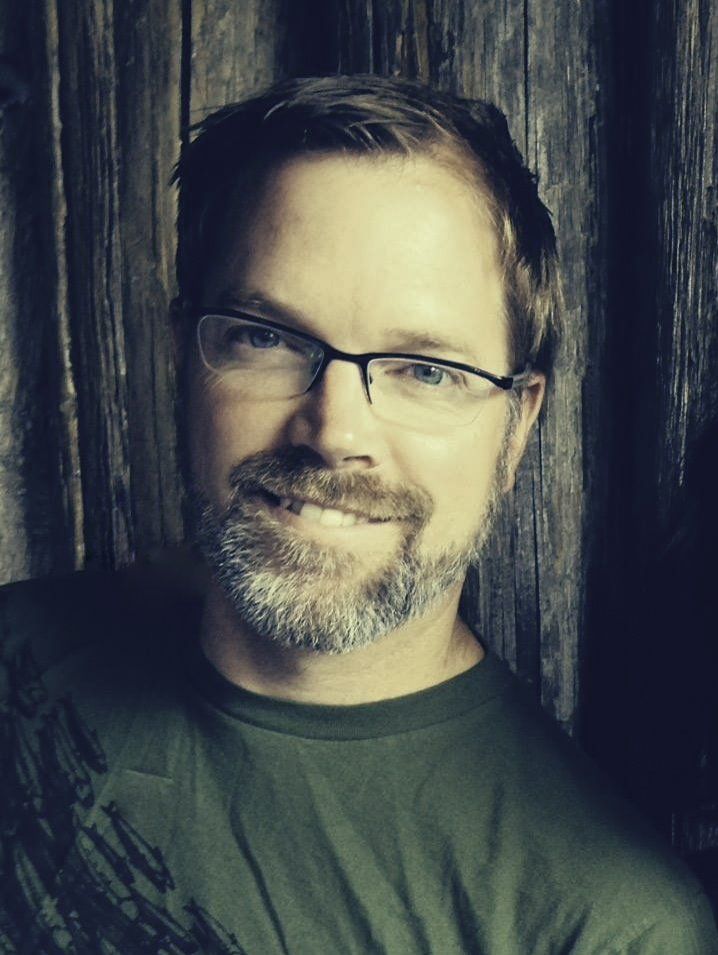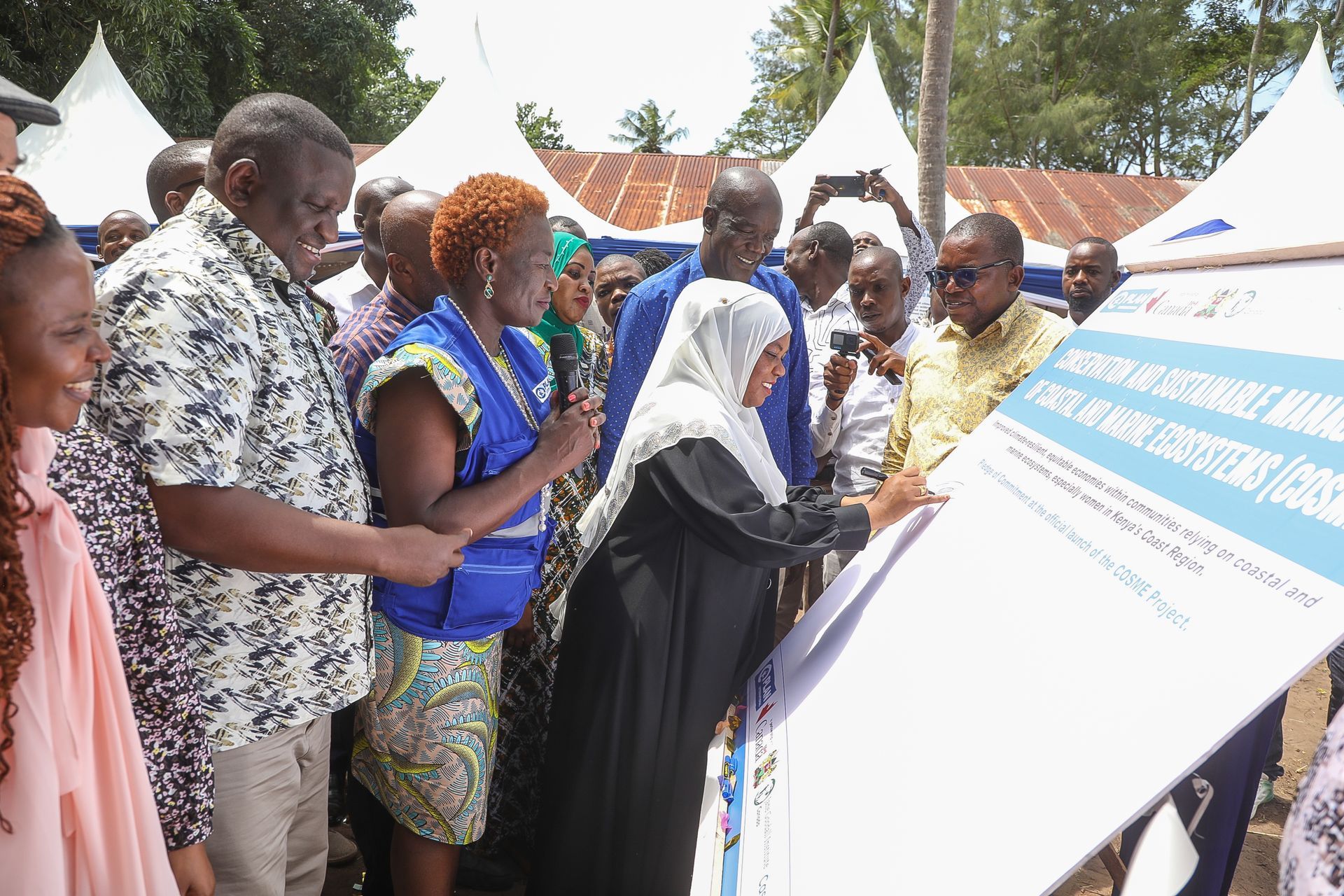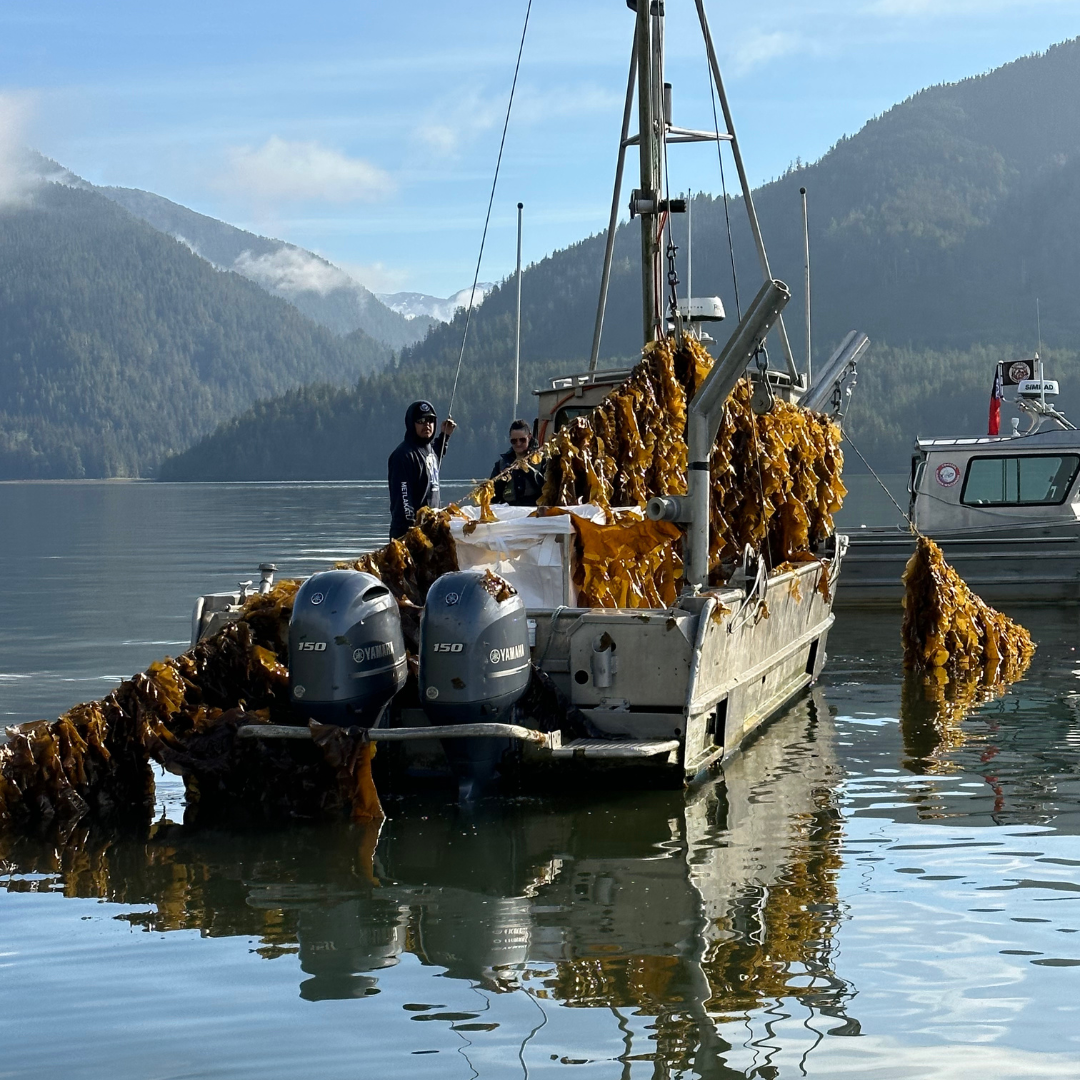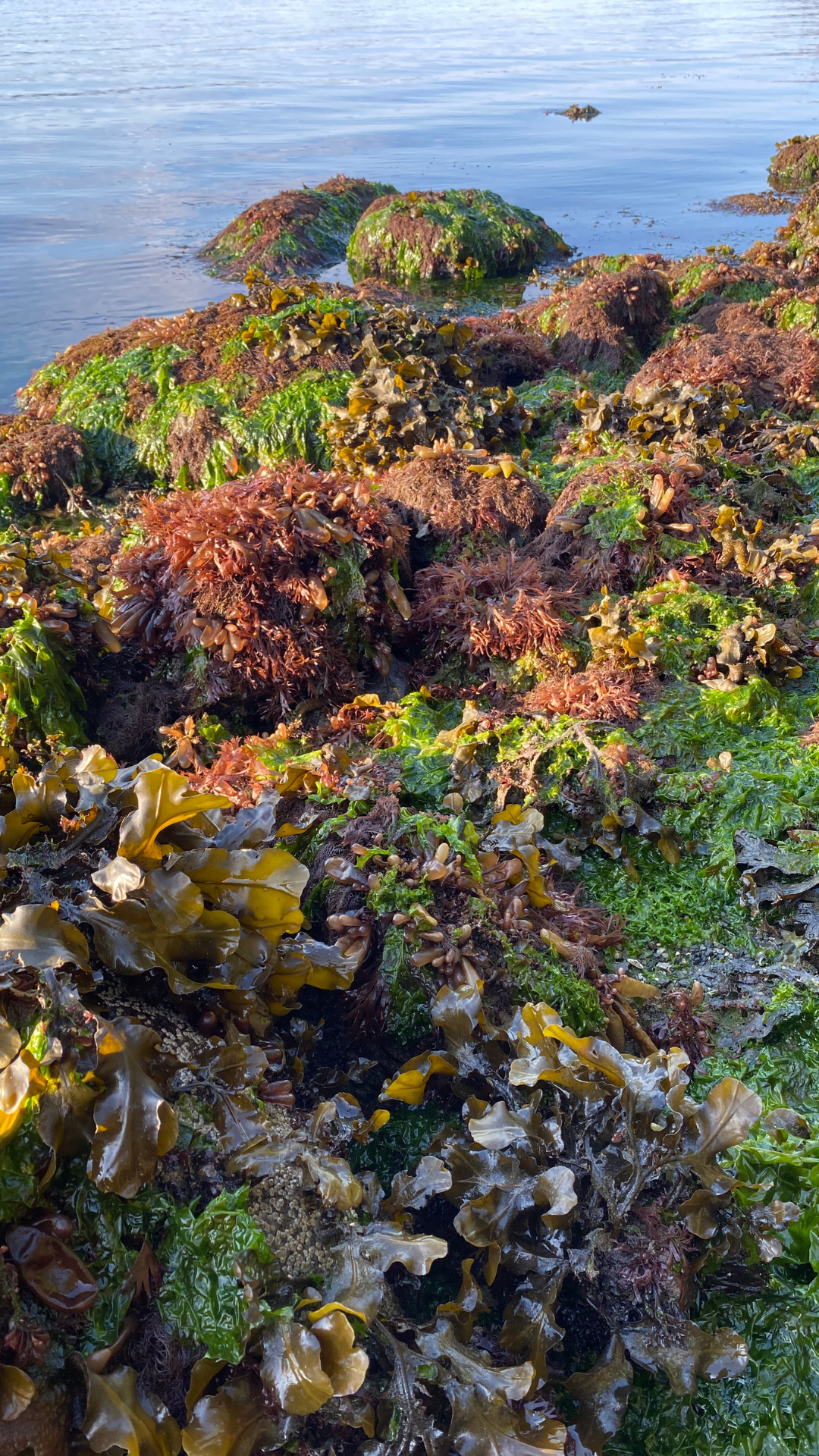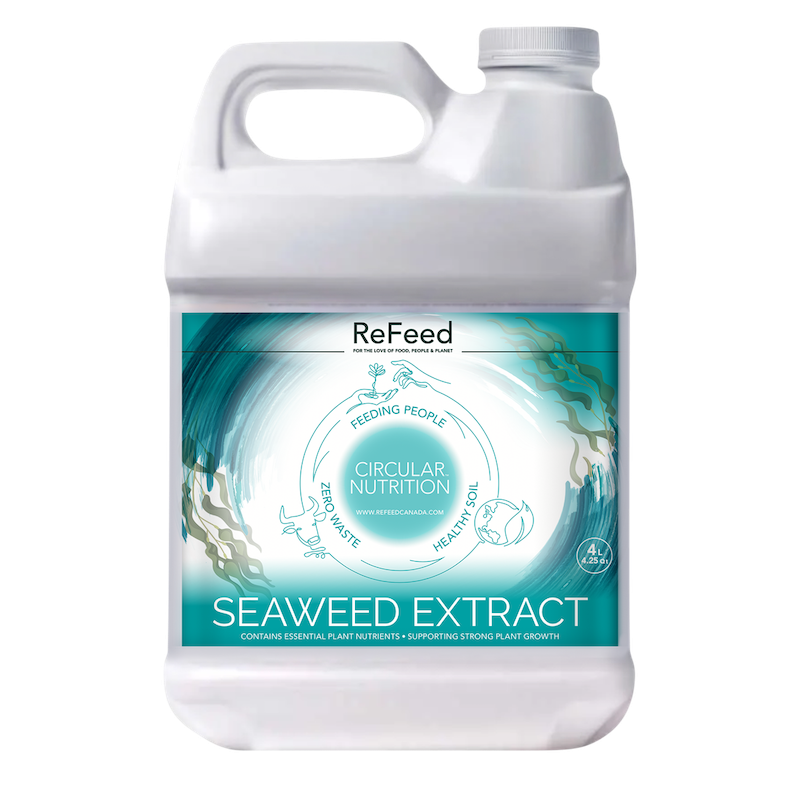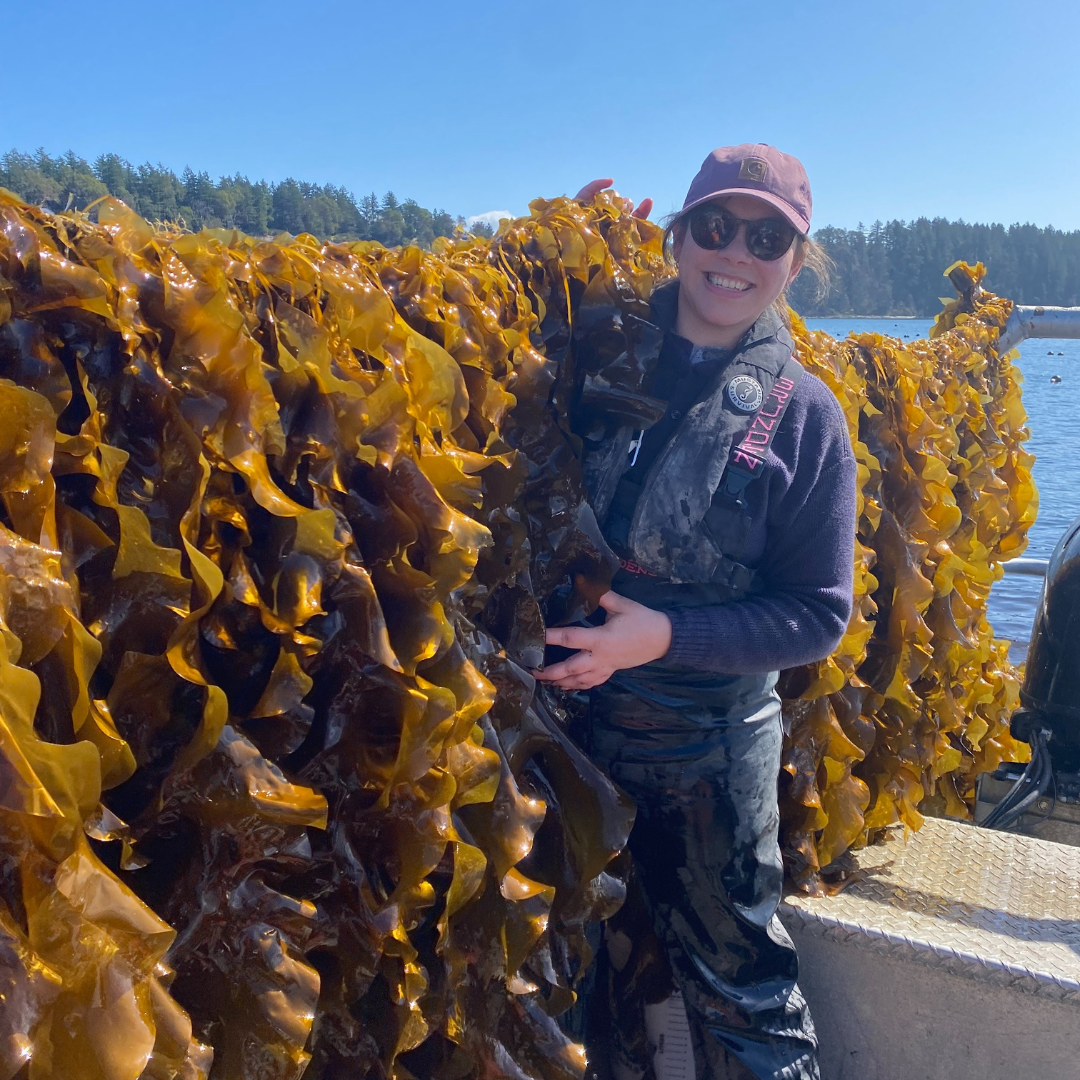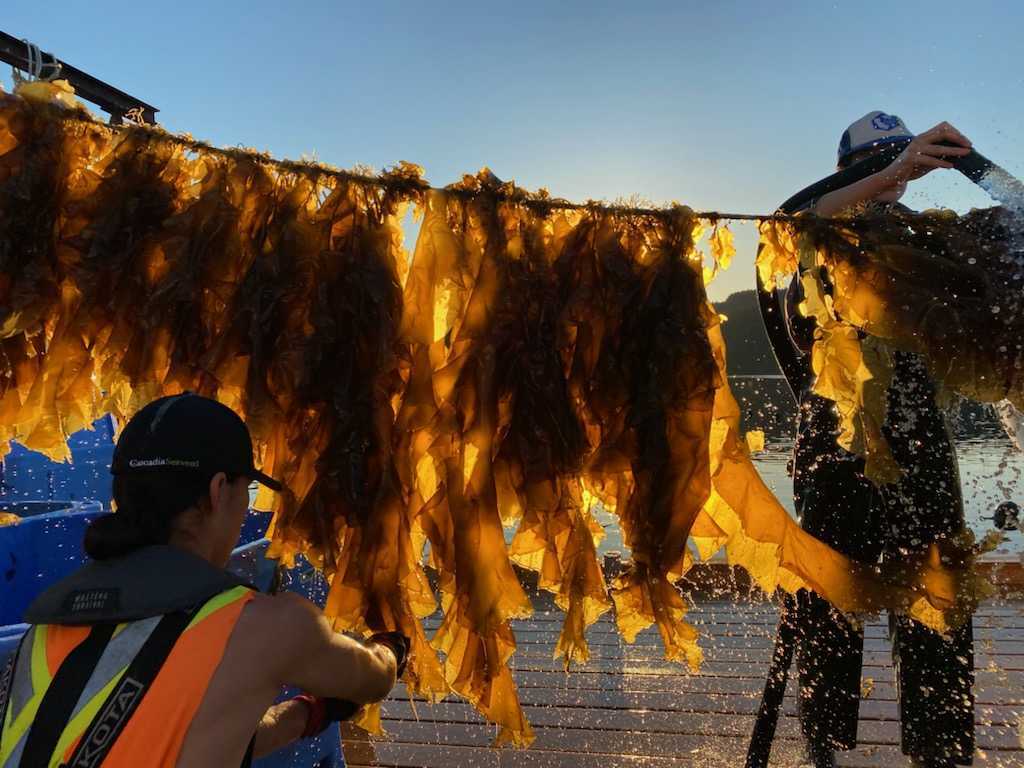At Cascadia Seaweed, we cultivate local species of seaweed and manufacture products for crop and cattle farmers.
Why scientists are looking to landscaping gravel to help restore Nova Scotia's kelp

In a converted shipping container perched oceanside in Ketch Harbour, N.S., a group of people gather to peer into tanks filled with fuzzy pieces of gravel.
The rocks are covered with tiny blades of sugar kelp. Soon, the squares of steel mesh they're fixed to will be suspended in the water at a kelp farming demonstration site in Mahone Bay, in the hopes of safeguarding the future Nova Scotia's kelp beds.
It's an effort by scientists, conservationists and a West Coast company working together on the restoration technique for the first time in Nova Scotia, although it's in use elsewhere in the world.
Kelp is a crucial part of marine environments in Nova Scotia, providing habitat for a range of other species and pulling excess nutrients from the water. But due to warming water temperatures, habitat destruction and pollution, kelp beds are declining, with consequences for ecosystems.
"We have kelp beds on both coasts that are thinning out, or perhaps even being lost entirely," said Stephen O'Leary, research team lead with the National Research Council. But with the green gravel technology, scientists are hoping they can give kelp in Nova Scotia and beyond a better chance at long-term survival.
The project involves collecting kelp blades from Mahone Bay in the fall — when diminishing daylight and cooler water temperatures cause kelp to go into a reproductive state — gathering microscopic spores from the reproductive blades, and using those spores to 'inoculate' the rocks. In other words, coax spores to settle on the gravel.
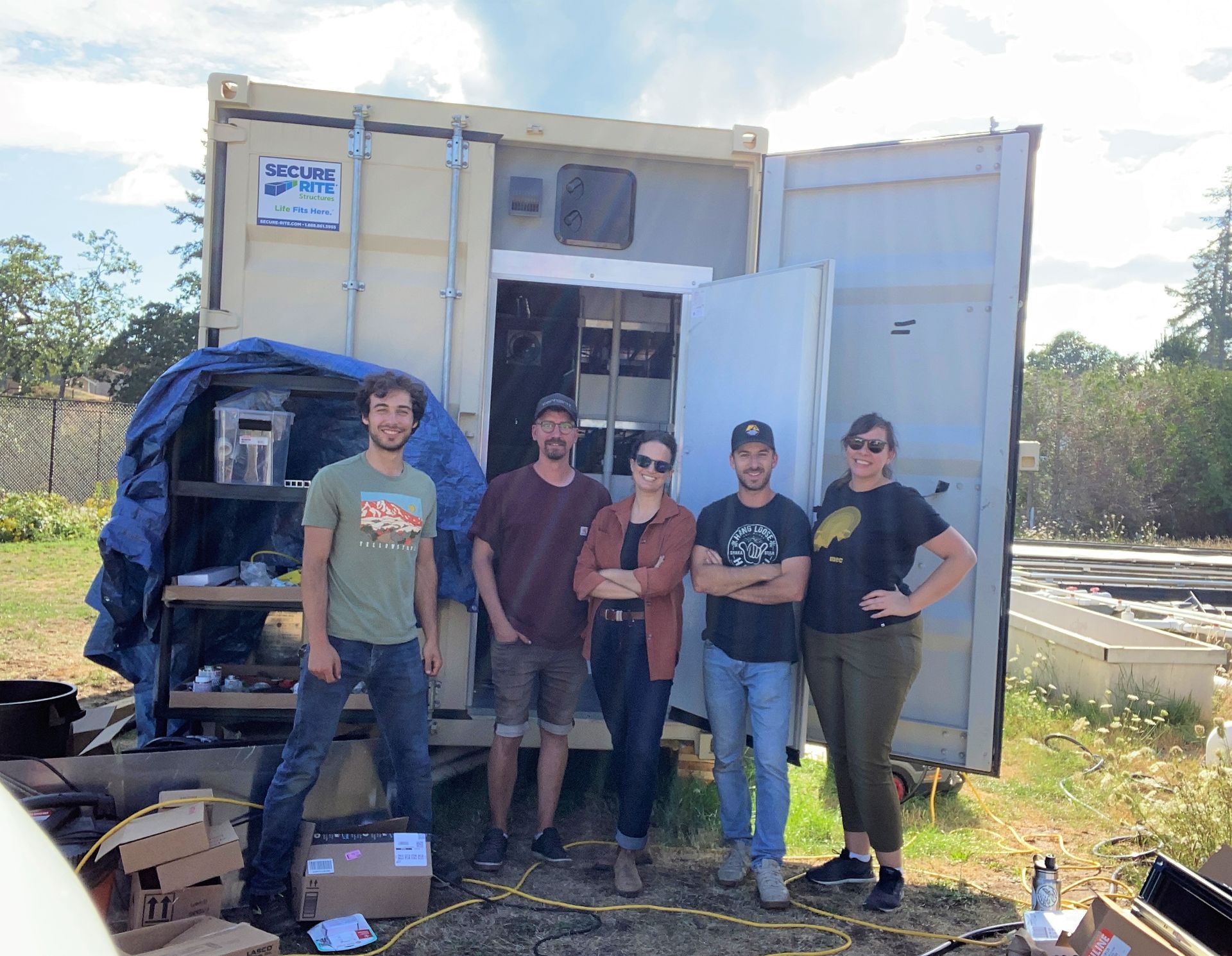
Cascadia Seaweed Team with the Green Gravel Production System (GGPS) Under Construction
Shipping container is mobile
Those tiny spores are then grown to a size where they are big enough to plant in a specially designed shipping container created by Cascadia Seaweed based on Vancouver Island in British Columbia. The mobile laboratory was designed specifically for producing green gravel, and has been tested at the National Research Council's Ketch Harbour facility, but could ultimately be moved to any location where green gravel is being developed and deployed.
During their first test, O'Leary said scientists initially weren't sure if the experiment had worked.
"For three weeks it looked like we just had tanks for the gravel and it wasn't clear whether anything was growing on them or not," he said. "So we thought, are we cultivating gravel here, or are we cultivating seaweed?"
Then, after a weekend in early December, scientists came back to find the gravel covered in tiny blades of baby kelp.
Typically, the gravel would then be sprinkled into the ocean, where they would settle on the sea floor. One or two of the many small kelp blades covering the rocks would survive to grow to their full three-metre length, with the base of the kelp — called the hold fast — growing around the rock to attach to the bottom.
In this case, the rocks are being attached to 110 squares of steel mesh that will be suspended several metres deep in the water column, so that researchers can track how well kelp grows using this method. Kelp will then grow from December to May.
"We're not expecting to restore a kelp bed in Mahone Bay at this time, but we're developing the techniques and technologies that would allow us to do that restoration application at a later date," said O'Leary.
This technology has implications beyond Mahone Bay.
Flora Salvo is an industrial researcher with the Quebec research group Merinov, which is also involved in the project. She said they're looking at doing something similar in Quebec.
Merinov is also working with the National Research Council to build a kelp seed bank. Combining their supply of genetic material with the green gravel technique could allow for repopulation of areas where kelp has been degraded or has disappeared due to pollution and higher temperatures.
"So having this bank of seed ready could [make it] easy for people that will be doing seaforestation, using the sea gravel technology," said Salvo.
Eventually, this could mean replanting areas using spores from individual kelp plants that have been identified as being naturally resistant to changing conditions, such as warmer waters.
In the meantime, scientists say having baseline data about the green gravel technique and its efficacy, as well as more biological data on kelp, could inform regulations on restoration. At the moment, there are no regulations for kelp restoration in the Atlantic provinces.
Restoration for the right reasons
Shannon Arnold, associate director of marine programs at the Ecology Action Centre in Halifax, said with more scientific attention and investment flowing to kelp restoration, guidelines are needed.
By participating in the green gravel research — including offering the EAC's kelp farming demonstration site in Mahone Bay as the site for the experiment — Arnold said they can help answer basic scientific questions that inform this process.
"In Canada at the moment … we don't have really strong guardrails and guidance about best practice for restoration," Arnold said. "That's something we're going to be working on with other groups to look at what we need to have in place to guide these types of things."
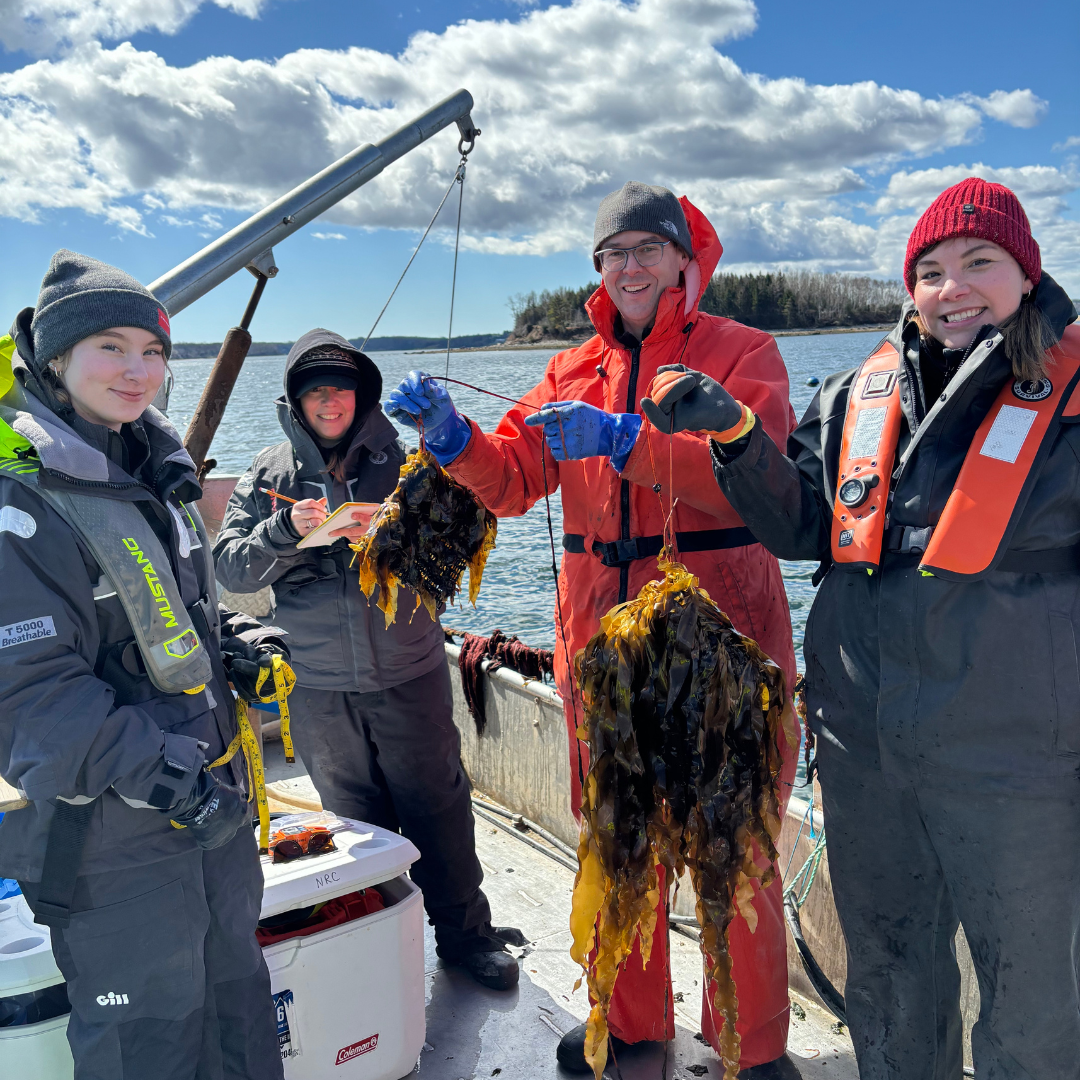
March 20, 2024
Dr. Jennifer Clark in Mahone Bay, Nova Scotia, home of the Ecology Action Centre's kelp farm checking in on the Green Gravel tiles produced in partnership with the National Research Council of Canada (NRC).

C - 9774 Third Street Sidney British Columbia V8L 3A4
Email: info@cascadiaseaweed.com
Phone: 1-778-351-4484

9774 - C Third Street Sidney British Columbia V8L 3A4
Email: info@cascadiaseaweed.com
Phone: 1-778-351-4484


